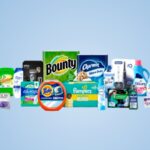
With good deals becoming harder to find, many frugal shoppers have pledged to turn away from major manufacturers’ pricey products, vowing instead to shift their loyalty to lower-priced smaller brands, or their store’s private label products. And when several top brands announced plans to raise prices and cut back on promotions last year, that only hardened frugal shoppers’ resolve – they were done with the major brands and their greedy money grabs.
But a funny thing happened in the meantime. Several brands are now reporting that shoppers haven’t turned away and are instead happily paying higher prices.
Over the past several days, companies including Unilever, Kimberly-Clark and Procter & Gamble have reported their latest quarterly earnings, their first since their revised pricing and promotional strategies have taken effect. And all have reported that the moves are improving their profitability. In other words, they took a chance raising prices and cutting back on coupons and promotions – and consumers have responded by buying their products anyway.
“We’re making strong progress realizing higher selling prices,” Kimberly-Clark CEO Michael Hsu told investors on Monday. “We’ll continue to monitor the impact on our volumes and competitive activity, but we remain focused and confident on realizing the benefits of the price increases.”
“I think we’re gaining collectively increased confidence,” P&G CFO Jon Moeller said a day later, that price increases can be “done the right way, coupled with innovation in a way that builds the value equation for consumers and customers, and you’re seeing that play through.”
P&G was the first of the group to announce pricing and promotional changes last summer. The company raised prices on Bounty paper towels, Charmin toilet paper and Puffs tissues by 5%, while shrinking the size of its Pampers diapers packages. It followed up on that move a few months later, by announcing 5 to 10% price hikes on several products in its Home Care, Oral Care and Personal Care categories, which includes brands like Dawn dish soap, Crest toothpaste and Old Spice deodorant. At the same time, “we have reduced couponing in a couple of categories… because those coupons overredeemed and we wanted to dial that back a little bit,” Moeller said at the time.
And P&G’s competitors followed suit. Kimberly-Clark began raising prices and/or lowering pack counts on products including Cottonelle and Scott toilet paper, Kleenex tissues, Viva paper towels, Huggies diapers, Pull-Ups training pants and GoodNites youth pants. “The near-term environment has become more challenging, and we are responding by aggressively reducing costs and increasing selling prices,” Hsu said at the time. “In some categories,” Hsu’s predecessor Thomas Falk said, “we have started dialing back the promotional depth and frequency and have additional plans to do more.”
Unilever, which makes everything from Dove soap to Lipton tea to Breyers ice cream, also raised prices on a number of items, and also reported no significant negative impact on sales.
So if you were hoping your fellow shoppers would balk at higher prices, forcing these manufacturers to learn their lesson, lower prices and offer more coupons and promotions – don’t hold your breath.
All of the companies pointed to the higher cost of raw materials like pulp and oil, as factoring into their decisions to pass along price increases to consumers. They’re also betting that shoppers will be willing to pay more for new and improved products. “The pricing dynamic is actually a positive, not a negative,” P&G’s Moeller said yesterday. “We try to take pricing in very smart ways, specifically combining pricing with innovation, so that the value equation we’re offering consumers increases. It doesn’t decrease.”
It’s a shift in strategy for most of these major companies, which previously had been trying to boost sales by lowering prices and offering more frequent coupons and promotions. Now, they’re devoting more of their marketing dollars to straight-up advertising instead.
So far, that strategy appears to be paying off, in the form of increased profits. But there are still risks. There are certainly shoppers who’ve balked at the higher prices and have shifted their loyalty to lower-priced alternatives. And the big brands may ultimately find themselves isolated at the top of the heap, alienating themselves from more price-conscious customers, because smaller brands so far don’t seem to be following their lead.
“The one thing we are keeping our eye on is, I think, some of the private labels or some of the smaller brands – we haven’t seen the price move up yet,” Hsu said. And if that price gap continues to grow between smaller brands and the big conglomerates, price-conscious customers may turn away and never come back.
Consider Tide, for example, P&G’s premier detergent brand. It’s darned near impossible to find a coupon for Tide these days, while competitor Henkel is offering so many coupons and promotions for its Persil brand, stores are practically giving it away. That may not be a great way for Henkel to generate strong profits in the short term, but it can certainly help build loyalty among shoppers who now consider Tide an unaffordable premium product.
So if you have cash to spare and don’t mind spending more for your favorite brands, they’ll happily take your money. But if you’re still clipping coupons and watching your spending, you may have to look elsewhere for deals – and let someone else pay the big brands’ higher prices.















